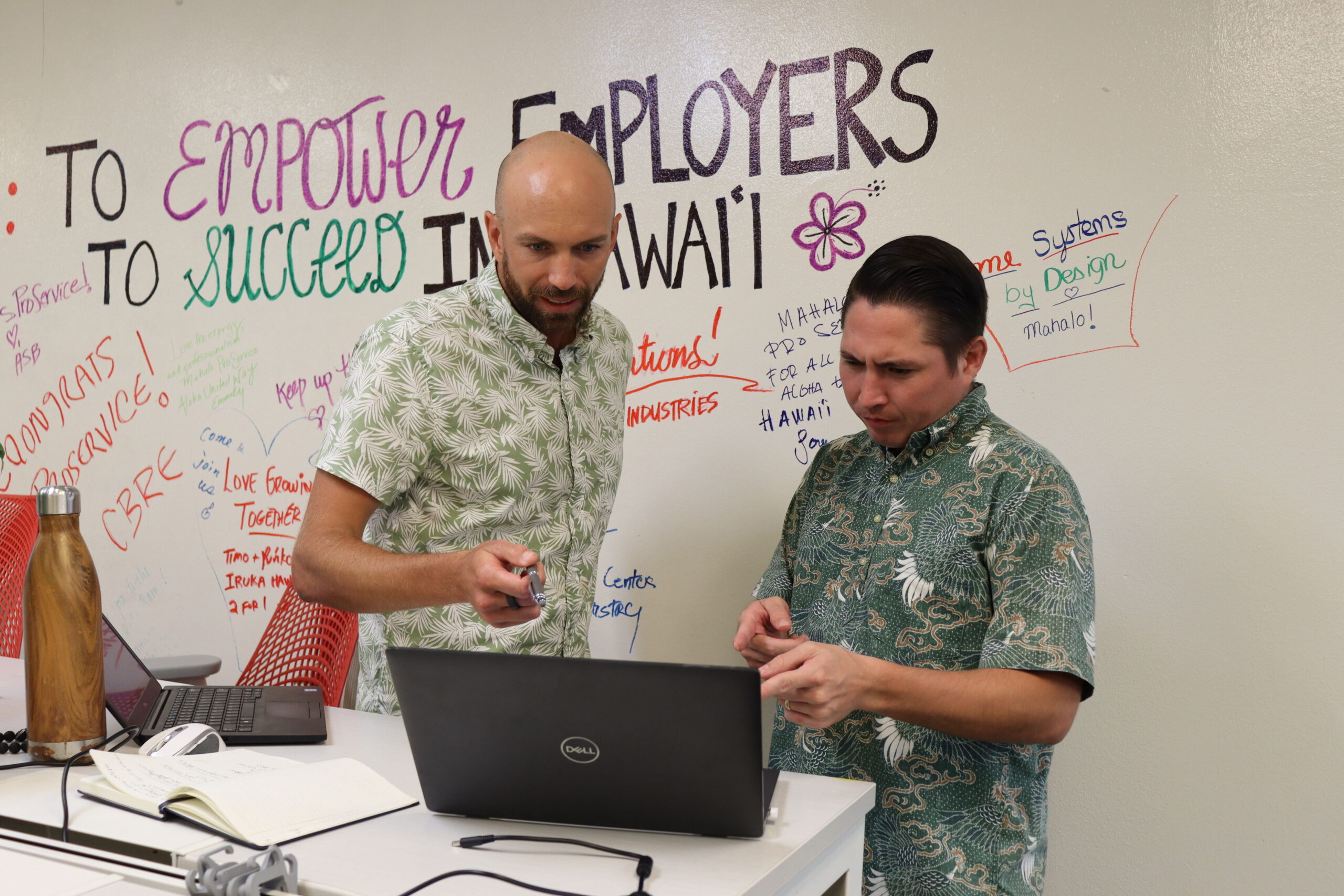Employee Retention: An Expert Guide on Retaining Your Best Talent
You’ve built a strong team and your business is humming along beautifully, but there’s one recurring problem. Just when your team develops an invaluable synergy, someone leaves. Whether they are chasing a bigger paycheck or a more competitive benefits package, having someone go after you’ve invested time, money, and energy into them can be frustrating.
The quicker you can learn how to improve employee retention, the sooner you can curb the negative effects of turnover and instead focus on fueling business growth. Stimulating retention requires getting down to the basics. Understanding the importance of employee retention, the causes of turnover, strategies for retaining top talent, and measuring employee satisfaction are all necessary aspects to consider.
We’ll cover these topics in-depth so your organization will have the knowledge and tools needed to increase employee retention and decrease turnover.
What is Employee Retention?
Employee retention is an organization's ability to maintain its workforce to ensure organizational stability. It’s partly measured by employee turnover, which can adversely affect a company’s success. On the other hand, strong employee retention (meaning workers stay at a company for an extended time), has numerous benefits for both employees and organizations.
Why is Employee Retention Important for Your Business?
Employee retention benefits all aspects of the company. Consistent staff continuity can lead to more efficient workflows and productivity, stronger team bonds, and a positive company culture. When employees are happy in their roles, they bring their best selves to work, and their team, clients, and organization reap the rewards.
Benefits of Strong Employee Retention
Here are the major gains a business can experience when they have solid retention:
- Cost & Time Savings: Retaining effective employees can immensely impact a company’s bottom line. New hires require training and development that demands time and energy from superiors, which eats up company funds on both sides. According to a Gallup poll, it takes about one full year for employees to reach their full potential — that’s a big investment on an unknown outcome.
- Increased Knowledge & Higher Efficiency: When committed employees have devoted years to a company, they are more likely to have undergone continued training and developed expertise in their role. Their knowledge of systems and processes makes them an organizational asset, resulting in higher efficiencies across many areas.
- Stronger Employee Morale & Engagement: A high employee retention rate can increase positivity and boost spirits. When employees are happy, they tend to want what’s best for the company and are more willing to work together to achieve a common goal. On the flip side, high employee turnover can affect those who stay because they may have to absorb additional workloads without increased compensation or a title change to match.
- Increased Productivity: Employees who remain at a company for an extended period of time are likely to be more productive in their day-to-day. Tasks that were once new and time-consuming can become second nature. They can also develop a shorthand with colleagues or clients, eliminating unproductive or circuitous communication.
- Stronger Customer Experience & Product Output: Customers and clients are more likely to develop meaningful relationships with contacts at your organization when they correspond with the same individuals over time. When your employees develop a deep understanding of a client or customer, it also leads to more accurate and efficient product output. These bonds create trust and loyalty that are tough to compete with.
- Stronger Team Cohesion & Company Culture: When colleagues develop a rapport over time, it can result in higher engagement rates and a more fulfilling company culture. In turn, a strong culture contributes to employee retention, so the positive cycle continues.
Negative Impacts of High Employee Turnover
When employees leave, it can have a negative ripple effect on the organization. Losing a long-standing employee disrupts processes and productivity, as they often possess valuable company and industry knowledge they take with them when they go.
Hiring and training are also expensive and even more so for complex roles with extensive onboarding processes. Recruiting a new hire costs most companies between $4,000 and $20,000 before the mention of salary and benefits even comes into play. So, it’s essential to understand the reasons people exit.
Reasons for Employee Turnover
Employees leave companies for various personal and professional reasons, but these themes below point to the most consistent causes of turnover:
- Dissatisfaction with pay or benefits: Many states now require job opportunities to list salary ranges, so employees have more transparency into pay and benefits than ever before. If they don’t feel compensated for the value they provide, they may be compelled to find work elsewhere.
- Issues with work relationships: When employees feel frustrated or misaligned with team members, they may move on from the friction altogether.
- Lacking work relationships: Even if employees don’t have issues with coworkers, they may not feel fulfilled if they don’t have meaningful connections with the people they work with. This is especially relevant for remote work environments.
- Incompatibilities with company culture/practices: When an organization’s values or ethics are incompatible with what matters to employees, people are likely to choose another company culture that resonates more with them.
- Lack of recognition/appreciation: Employees who feel continually undervalued and unappreciated can develop resentment, which can fuel their decision to part ways.
- Lack of career advancement: When employees feel passed by on promotions or lack opportunity for upward mobility within the company, they are likely to leave for greater potential elsewhere.
- Lack of career development: Many workers desire professional growth and development, so when an organization fails to provide ongoing training, education, and learning, employees may choose to escape the stagnation.
- Lack of work/life balance: Employees tend to strongly value stability between professional and personal responsibilities. When work bleeds into their personal obligations, family time, or much-deserved downtime, they may burn out and look for a gig with a healthier balance.
- Concern about the company's future: From legal woes to financial struggles, if employees are worried about their organization's future, they will likely leave to mitigate the risk of going down with the ship.
- Better opportunities elsewhere: With easily accessible listing sites that broadcast innumerable job opportunities, employees are more empowered to find roles that better fit their professional needs and goals.
- Unrelated personal reasons: Sometimes, people leave their jobs for personal reasons outside of a company’s control. In cases like this, it’s still best to foster positive experiences for employees as they may feel motivated to refer other candidates or return to the team in the future.
Signs an Employee Wants to Leave
It’s important to understand why employees leave, but even more advantageous to recognize signs they may be planning their exit so you can get in front of it.
If you notice a shift in attitude from your employees, that could be a major signal of dissatisfaction in their role. Pay attention to their output — if they suddenly start missing deadlines or dropping the ball uncharacteristically, it could represent a waning interest in their daily tasks. Another telltale sign that an employee may be one foot out the door is time away from work, which could indicate time spent on interviews with other companies.
Being able to perceive warning signs and having open communication with employees could be the difference-maker in their decision to stay or leave.
How to Increase Employee Retention: 15 Strategies for Success
Knowing how to improve employee retention and motivation is crucial to the long-term success of your organization. Since employees leave for a variety of reasons, increasing employee retention dictates a multifaceted approach to ensure you’re considering solutions from all aspects.
Here are 15 actionable ways to curb turnover and foster employee retention.
1. Understand the Causes of Turnover
Before deciding on the best ways to improve employee retention, it's crucial to understand why employees leave. Conduct exit interviews with outbound staff to discover what motivated them to depart. Once you pinpoint the sources of attrition, you can address them more effectively.
2. Ensure Effective Leadership & Communication
The people you hire, especially team leaders, can significantly impact employee satisfaction. Employees with a positive relationship with their managers are likely less inclined to leave, while those experiencing issues with leadership may be pushed to contemplate a job change.
Be deliberate in your hiring process, seeking individuals dedicated to your mission and capable of uplifting others. An effective leader should prioritize open communication with their direct reports in the following areas:
- Employee Satisfaction: A leader should be willing to listen to and address employees' questions and concerns to ensure they continually feel satisfied in their roles.
- Sense of Purpose: A leader’s responsibility is to help instill a sense of purpose in their teams, which can motivate them and make them feel like valuable members of the organization.
- Greater Autonomy: When a leader maintains effective communication with their employees, it allows more space for confidence and trust, which many workers appreciate.
- Burnout Prevention: The best leaders are not only responsive to their direct reports’ needs as they arise, but they are proactive and intuitive in gauging potential issues, which can help prevent burnout.
3. Create a Supportive Onboarding Program
A friction-filled onboarding process can leave employees wondering why they chose your company and send them back to the job-searching stage. Conversely, a creative, thoughtful, and engaging onboarding program can excite new employees about their new roles and set the stage for a long and mutually beneficial relationship.
If your onboarding process lacks consistency or creativity, consider outsourcing to a partner like ProService Hawaii. We provide efficient and informative services for in-person hires and onboarding remote employees. You can also explore our useful onboarding templates to help create a smoother journey for new hires.
Let onboarding kickstart a solid foundation between the company and your employees to help improve employee retention from the start.
4. Offer Competitive Compensation
Competitive compensation is essential for attracting — and keeping — top talent. According to Gallup, “pay/benefits” was the most prevalent cause for employee turnover in 2023, so taking compensation seriously is essential for improving employee retention.
Employees want to feel their paychecks match the value they bring to a company. Even if you can’t exceed what competitors offer, you should offer other incentives to offset this. If you don’t compensate for quality talent, someone else will.
5. Offer Comprehensive Benefits & Wellness Programs
Employee benefits are a top consideration for job seekers. Voluntary benefit offerings like healthcare, vision, and dental coverage are expected, and tiered systems are the best for meeting the needs of a broad range of employees. It’s advantageous to find a provider who offers something for everyone, from single employees to families with multiple dependents.
Health and wellness programs are another major attraction these days You can provide discounts on meditation apps, therapy stipends, or gym memberships. Consider offering other benefits packages, like life insurance, flexible spending accounts, and health savings accounts to stand out from the crowd.
Offering avenues for encouraging health and wellness and applying other incentive ideas for employees, will help your team be happier and healthier, leading to better productivity and stronger work-life balance.
6. Facilitate Training & Career Development
Stagnation is the enemy of engagement. Most employees want to enhance their skills and contribute to individual and company milestones. Offering ongoing training and development opportunities can satisfy an employee’s desire for professional growth while their expanded knowledge can also benefit the company.
Sending someone to a seminar, paying for a virtual class, or offering additional training makes your team feel valued and appreciated. Signaling to employees that your organization cares about their development can make employees feel more fulfilled and effective in their roles.
7. Provide Professional Growth Opportunities
Many employees desire career growth and advancement. Recognize and reward exceptional performance by offering opportunities for increased responsibilities or promotions. The most loyal leaders tend to emerge from within the company rather than being recruited externally.
To emphasize your commitment to employees’ long-term career growth, leaders should prioritize communication and goal-setting, regularly touch base with 1:1 meetings, set quarterly goals, and offer career coaching to help them progress. Expressing interest in their career goals demonstrates your investment in their value and upward mobility.
8. Emphasize Work-Life Balance & Flexibility
Today’s employees desire a balance between personal time and professional responsibilities. There are various ways to demonstrate your commitment to work-life balance.
Offer ample paid time off and encourage your team to utilize their earned vacation time. Implement half-days for “Summer Fridays,” or give extra holidays focusing on employee appreciation. If feasible, provide remote or hybrid work opportunities, allowing employees to save commuting time. And, as always, keep the lines of communication open with your employees to ensure they feel balanced with their work and personal lives.
9. Implement Performance Reviews & Feedback
It’s important that your employees feel empowered to express their views and provide feedback, as this fosters a culture of mutual learning within an organization. Implementing feedback opportunities enables staff to share their perspectives on their work experience, voice concerns, generate ideas, and communicate their goals.
When management embraces feedback with openness, accepts alternative approaches, and encourages respectful exchanges, employees feel valued, and it can lead to unexpected positive outcomes for the organization.
10. Recognize & Reward Employees
Acknowledging employees’ unique contributions is crucial to ensuring hard work doesn’t go unnoticed and can lead to enhanced morale and loyalty in the workplace. A simple “thank you” or “good job” holds significant value — whether it’s a public “shout-out,” an official award that can be shared on professional social media sites, or a tangible offering like a gift card. Recognition and rewards can motivate workers to continually put their best foot forward and chase the high of feeling valued.
11. Promote Team Building & Engagement
Cohesive teams enable members to learn from and share talents with each other, enhancing teamwork and fostering a sense of belonging. The team's synergy should surpass the sum of its parts, leading to stronger alignment and collaboration.
While certain aspects of team chemistry develop naturally, you can nurture other components through proactive efforts. Regular team-building activities, group lunches, and collaborative opportunities can strengthen bonds and foster a sense of unity among employees.
12. Prioritize Diversity and Inclusion Initiatives
Building diversity in the workplace is a viable means of improving workplace culture and making everyone feel more welcome. Get your team on board by discussing your plans, explaining the “why,” and being transparent about the benefits of your new initiatives. Prioritizing diversity and inclusion can provide insights into potential existing issues, and addressing them can help accelerate your business while contributing to its culture.
13. Offer Miscellaneous Perks & Amenities
Building diversity in the workplace is a viable means of improving workplace culture and making everyone feel more welcome. Get your team on board by discussing your plans, explaining the “why,” and being transparent about the benefits of your new initiatives. Prioritizing diversity and inclusion can provide insights into potential existing issues, and addressing them can help accelerate your business while contributing to its culture.
14. Build a Positive Company Culture with Transparency
An environment that promotes honesty, integrity, and inclusivity leaves little room for misinterpretation. If an organization's standards and actions reflect a positive culture, employees will take comfort in knowing their values won’t be compromised at their jobs.
Transparency and open communication are critical to the health of any organization. Asking questions and listening is a simple way to establish trust and goodwill between employees and their organization. A company with well-defined values that actively implements them will likely retain good employees and attract loyal customers.
15. Develop a Strong Employer Brand
Reputation matters, and it can make a difference in employee retention. By treating your staff well, you can retain a dynamic workforce and cultivate a positive reputation. This requires patience though — building a strong employer brand won’t happen overnight. Making meaningful changes to your benefits package, payroll management strategy, and onboarding processes are a few ways to immediately impact your reputation.
Measuring & Understanding Employee Retention Metrics
Extending these options to employees during economic hardship can be a differentiator for companies in the job market and bolster the confidence of current workers. Competitive compensation is important, but job security, schedule flexibility, and professional development opportunities matter to people, too. Consider how you can adjust your recruitment and retention strategies to keep these ideas in mind.
Want to learn more about creating a compensation strategy that unifies your business? Download our free guide for the 5-step process.
Signs an Employee Wants to Leave
It’s important to understand why employees leave, but even more advantageous to recognize signs they may be planning their exit so you can get in front of it.
If you notice a shift in attitude from your employees, that could be a major signal of dissatisfaction in their role. Pay attention to their output — if they suddenly start missing deadlines or dropping the ball uncharacteristically, it could represent a waning interest in their daily tasks. Another telltale sign that an employee may be one foot out the door is time away from work, which could indicate time spent on interviews with other companies.
Being able to perceive warning signs and having open communication with employees could be the difference-maker in their decision to stay or leave.







![Basic Employee Benefit Terms Every New Hire Should Know [Email Template]](https://www.proservice.com/wp-content/uploads/2022/10/Basic-Benefit-Terms-Every-New-Hire-Should-Know-Email-Template.png)

